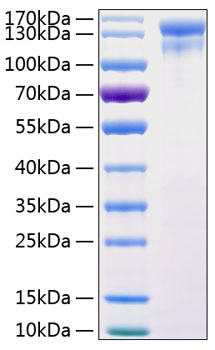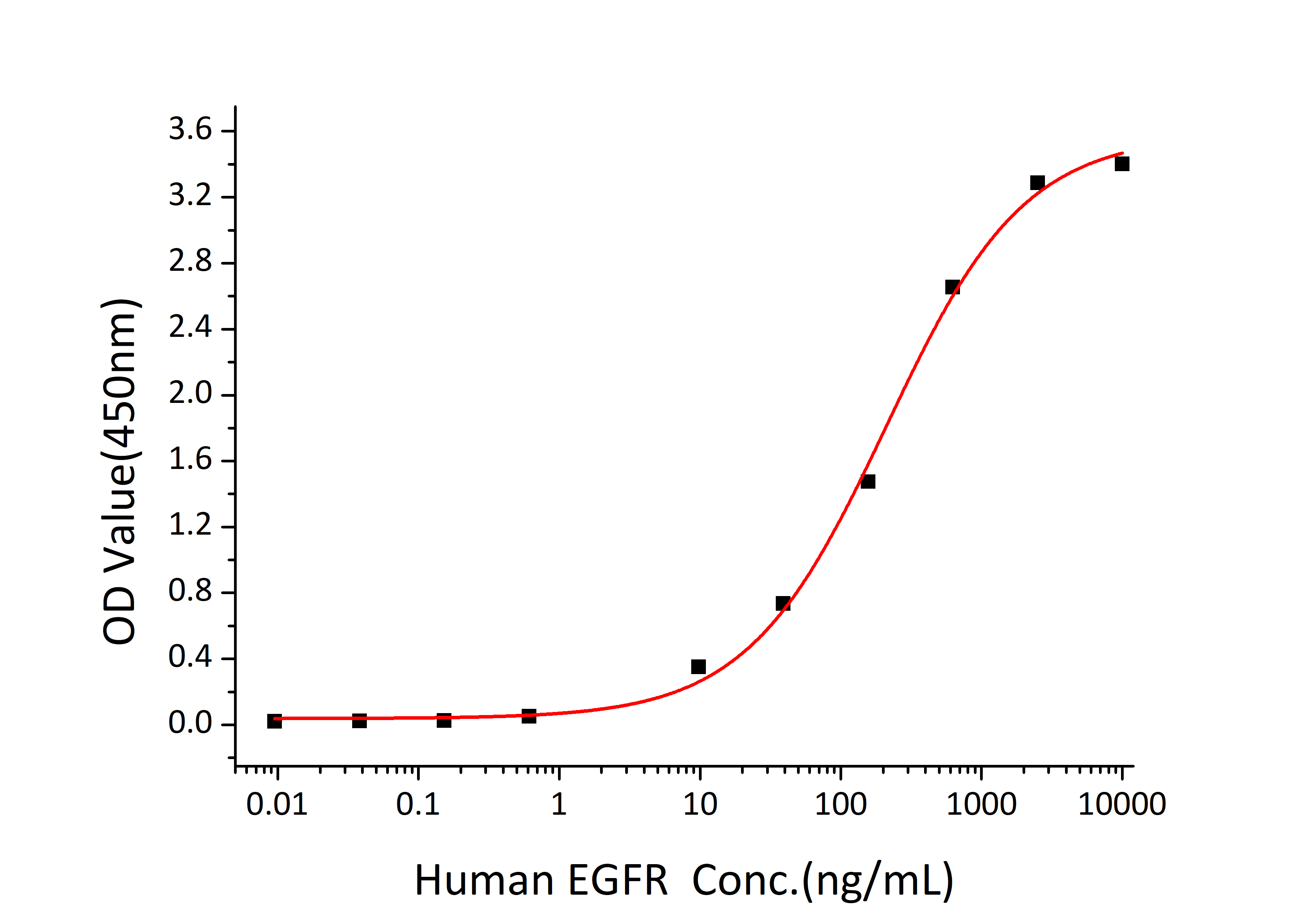Description
Recombinant Human HER1/ERBB1/EGFR Protein
The Recombinant Human HER1/ERBB1/EGFR Protein is a biologically active recombinant protein that plays a significant role in various cellular processes and signaling pathways in human biology. This protein is widely employed in immunological research, cell biology studies, protein-protein interaction analyses, and therapeutic development, providing researchers with a reliable tool for investigating HER1/ERBB1/EGFR function and its implications in health and disease.
This product (SKU: RPCB0751) is produced using HEK293 cells and features a C-hFc&His tag for convenient detection and purification. The protein exhibits a calculated molecular weight of 97.64 kDa with an observed molecular weight of 125-145 kDa under denaturing conditions, achieving ≥ 90 % as determined by SDS-PAGE.. Functional bioactivity has been validated through rigorous quality control assays, confirming its suitability for demanding research applications.
Key Features
| High Purity by Affinity Chromatography | |
| Mammalian & Bacterial Expression Systems | |
| High lot-to-lot consistency via strict QC |
| Product Name: | Recombinant Human HER1/ERBB1/EGFR Protein |
| SKU: | RPCB0751 |
| Size: | 10 μg , 20 μg , 50 μg , 100 μg |
| Reactivity: | Human |
| Synonyms: | EGFR, ERBB, ERBB1, HER1, NISBD2, PIG61, mENA, epidermal growth factor receptor, ERBB, ERBB1, HER1, NISBD2, PIG61, mENA |
| Tag: | C-hFc&His |
| Expression Host: | HEK293 cells |
| Calculated MW: | 97.64 kDa |
| Observed MW: | 125-145 kDa |
| Gene ID: | 1956 |
| Protein Description: | High quality, high purity and low endotoxin recombinant Recombinant Human HER1/ERBB1/EGFR Protein (RPCB0751), tested reactivity in HEK293 cells and has been validated in SDS-PAGE.100% guaranteed. |
| Endotoxin: | < 0.1 EU/μg of the protein by LAL method. |
| Purity: | ≥ 90 % as determined by SDS-PAGE. |
| Formulation: | Lyophilized from a 0.22 μm filtered solution of PBS, pH 7.4.Contact us for customized product form or formulation. |
| Bio-Activity: | Measured by its binding ability in a functional ELISA. Immobilized recombinant human EGF at 0.5 μg/mL (100 μL/well) can bind Rrecombinant human EGFR with a linear range of 0.3-2.5 μg/mL. |
| Reconstitution: | Centrifuge the vial before opening. Reconstitute to a concentration of 0.1-0.5 mg/mL in sterile distilled water. Avoid vortex or vigorously pipetting the protein. For long term storage, it is recommended to add a carrier protein or stablizer (e.g. 0.1% BSA, 5% HSA, 10% FBS or 5% Trehalose), and aliquot the reconstituted protein solution to minimize free-thaw cycles. |
| Storage: | Store at -20℃.Store the lyophilized protein at -20℃ to -80 ℃ up to 1 year from the date of receipt. After reconstitution, the protein solution is stable at -20℃ for 3 months, at 2-8℃ for up to 1 week. |
The EGFR (epidermal growth factor receptor) subfamily of receptor tyrosine kinases comprises four members: EGFR (also known as HER-1, ErbB1, or ErbB), ErbB2 (Neu, HER-2), ErbB3 (HER-3), and ErbB4 (HER-4). EGFR protein is type I transmembrane glycoprotein that binds a subset of EGF family ligands including EGF, amphiregulin, TGF-α, betacellulin, etc.The human EGFR cDNA encodes a 1210 amino acid (aa) precursor with a 24 aa signal peptide, a 621 aa extracellular domain (ECD), a 23 aa transmembrane segment, and a 542 aa cytoplasmic domain. EGFR signaling has been shown to exert action on carcinogenesis and disease progression, and thus EGFR protein is proposed as a target for cancer therapy currently, which is overexpressed in a wide variety of tumors and is the target of several anti-cancer drugs.








